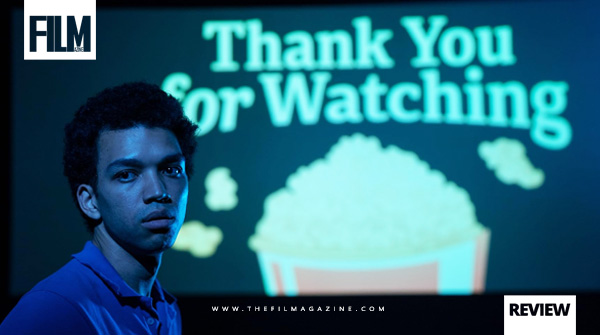Movie Reviews
Movie Review – Dune: Part Two

Read Time:4 Minute, 32 Second
I have read all of Frank Herbert’s DUNE books many times, and a few that were written by his son Brian. I can unequivocally say that the DUNE is my favorite science fiction series. The depth of the universe that Herbert creates is rivaled only by Tolkien’s Lord of the Rings. This is why it is so hard to recreate DUNE for the screen. If I had a choice, I would have preferred that DUNE were created as a streaming mini-series that could have taken as much time as needed to tell the story. The visuals and music may not have been as spectacular as what Denis Villeneuve was able to pull off, but the story could have explored the depths of the characters and plot much more deeply.
What I love about the movie
What I love most about Denis Villeneuve’s DUNE is the visuals. The mood Villeneuve creates with his cinematic eye provides hints into the depth of the story that cannot be told through dialog or acting. Arrakis, the planet DUNE, is a character in the book, and Villeneuve treats it as such. I think I might agree with someone who said that Arrakis is the best-developed character in the movie.
—–Content continues below——
Every actor performs magnificently. Of course, the actors deserve credit for their talent, but I believe that the only way to get great acting from an entire cast is through great script and great direction.
What I dislike about the movie
I’m not one who thinks that any movie based on a book should try to be completely faithful to the source material. Each medium should stand on its own. That being said, there are things that are changed in the movie that I don’t think transfer. The most glaring is that Gurney Halleck was convinced that Lady Jessica was the traitor and not Dr. Yueh. That was instrumental to the motivation for Paul to take the water of life. Speaking of which, in the book, Lady Jessica did not want her son to take the water of life. For that matter, neither did Paul. It was only done after much trepidation. This plot line is completely removed from the movie. The Harkonnens launch an attack on Sietch Tabr and destroy it; Paul says, “Well, I didn’t see that coming. I guess I should take the water of life so that I can see the future more clearly.” That’s about how glibbly the movie treats it whereas in the book it’s a crucial decision that has enormous repercussions.
Also, Alia is born in the book and she’s the one who kills the Baron. The events in the movie are massively compressed as compared to the book. The events in the book span about four years. The events in the movie are compressed into less than nine months since Jessica is pregnant when she arrives on Arrakis and Alia is yet to be born by the end.
I’m also not sure what to think of the changes made to Chani and the relationship between Paul and Chani. On the one hand I like that Chani has more agency in the book. That works well for the story, but now I’m unsure how they will make amends without diminishing Chani’s agency. Villeneuve has said that he is already working on the script for Children of Dune and so Paul and Chani will have to have a reconciliation before they can actually have children. I’m going to guess that the third movie will pick up a number of years into the future, just as the book does. But to have Paul and Chani fix things off-screen now would be weak sauce.
I wish more details were given to the motivations of the characters. As I mentioned earlier, Frank Herbert created a detailed universe filled with conflict and did a masterful job of putting his characters in situations where they were forced to make sacrifices. Paul did not want to be the Kwisatz Haderach. He only chose that path as a last resort. The movie expressed his fear of taking the water of life, but the motivation for taking that risk wasn’t sufficiently expressed in the movie.
Conclusion
I’m glad that Villeneuve took on the daunting task of making DUNE. It’s hard to be critical given the constraints of cramming twenty hours of material into the five hours of DUNE 1&2. The visuals and music are masterpieces. With any hope this will inspire someone else to tackle the source material someday and give it the proper attention to detail it requires.
Grade: B
About The Peetimes: I think the first two Peetimes are the best, but none of them are bad. The only issue is with the forth Peetime, there is an important scene that begins as the Peetime ends that you don’t want to miss.
There are no extra scenes during, or after, the end credits of Dune: Part Two.
| Rated: | (PG-13) Sequences of Strong Violence | Brief Strong Language | Some Suggestive Material |
| Genres: | Action, Adventure, Drama |
| Starring: | Florence Pugh, Timothée Chalamet, Rebecca Ferguson |
| Director: | Denis Villeneuve |
| Writer(s): | Denis Villeneuve, Jon Spaihts, Frank Herbert |
| Language: | English |
| Country: | United States, Canada |
Plot
Duke Paul Atreides joins the Fremen and begins a spiritual and martial journey to become Muad’dib, while trying to prevent the horrible but inevitable future he’s witnessed: a Holy War in his name, spreading throughout the known universe.
Don’t miss your favorite movie moments because you have to pee or need a snack. Use the RunPee app (Androidor iPhone) when you go to the movies. We have Peetimes for all wide release films every week, including DUNE part II, Drive Away Dolls, and coming soon King Fu Pana, The American Society of Magical Negroes, Ghostbusters: Frozen Empire, and Godzilla x Kong: The new Empire and many others. We have literally thousands of Peetimes—from classic movies through today’s blockbusters. You can also keep up with movie news and reviews on our blog, or by following us on Twitter @RunPee.
If there’s a new film out there, we’ve got your bladder covered.
Creator and developer of the RunPee app. When something doesn’t work right in the app it’s pretty much his fault. 🙂
Aspiring author. Would like to finish his “Zombie Revelations” trilogy if he could break away for working on RunPee and the cottage he’s building for RunPee Mom.

Movie Reviews
Short Film Review: Blue and White (2022) by Hiroyuki Nishiyama

Hiroyuki Nishiyama’s telling of Ryusuke and Midori’s journey toward discovery remains poignant but hopeful in Blue and White
Hiroyuki Nishiyama offers his second narrative short film, “Blue and White,” capturing themes close to the concerns of his first film “20 db” (2021) but focusing on the effects of loss and what comes after it. Its brief runtime is a delight to see, from the intimacy of its design to the intricacy of the performances.
The film opens with Ryusuke (Jun Kunimura) starting his day gathering firewood, then cuts to his workshop where he steams seawater to harvest salt. His granddaughter, Midori (Momoko Fukuchi) eventually enters the frame, mumbling to herself why her grandfather is working that morning of her grandmother’s funeral. An attendee of the funeral (Toshio Kakei) asks Midori the same question she was mumbling earlier, hinting that it is disrespectful to the dead for her grandfather to not show his face in the funeral.
What is it about salt harvesting that makes it more important than sending off a loved one to the afterlife? Why isn’t Ryusuke showing his face to the attendees? What is he even feeling that day? He seems like a hard-headed old man who values nothing other than his work. From these questions, “Blue and White” shifts its inquiry to the nature of grieving.
Writer and director Nishiyama explores these questions by depicting the social and personal aspects of grieving where one is invisible to the other. Funeral rites stand for the social face of grieving that Nishimaya presents through particular social conventions: from the temple where each ritual stands for something spiritual to a gathering after where people share meals while remembering the deceased. People wear black on these occasions. Ryusuke, however, is not there to see all these. Similarly, the funeral attendees do not see him witness the ritual, making them think that he may not be taking the whole thing seriously.
What the attendees do not see in the absence of the grandfather is the soul of his work as a paludier. The workshop is his personal space. Arata Dodo’s camerawork brings the frame intimately to the process of salt harvesting and brings us closer to Ryusuke as a person. He is not as closed-shut as the earlier scenes depict him. The workshop is open to Midori with whom her grandfather shares the delicate process of salt harvesting.
Kunimura delivers this shift between the stiff social facade of Ryusuke and the quietly grieving husband with fantastic flexibility. His performance is leveled with his character’s concerns for both the past and the future, making his acting less melodramatic but not lacking in emotional power. Fukuchi, on the other hand, plays Midori with teen-like innocence. Her earlier reactions to her grandfather’s absence have a hint of curiosity rather than annoyance. From how the two main actors depict their characters, director Nishiyama sets the film with different directions for the two characters. For Ryusuke, it is to explore and process grief in his own way, and for Midori to learn more about why her grandfather behaves in that way.
Subscribe to AMP newsletter by clicking on the image below

The film navigates these journeys towards discovery within twenty minutes, a narrative that lasts a lifetime. But this is not just a single lifetime that the film is navigating. While Ryusuke is explaining to Midori the importance of salt harvesting for him and his wife Fujiko, he is pondering both their past and what will it be for the future. This opens a different dimension to grief both as a social and a personal process. While funeral rites operate as a necessary pause to usual social activities, grieving does not stop at the end of the ritual, especially for those who are personally linked with the deceased. Ryusuke does not stop grieving even while working and his grief is deeply linked with his work. He told Midori that for something that has a capacity for life and purification, salt must be made with care. By immersing himself through his work, he expresses his care for his late wife and preserves her memory.
Nishiyama’s telling of Ryusuke and Midori’s journey toward discovery remains poignant but hopeful. Its delicate touch with the theme makes the work emotionally full without the need for heavy treatment, with the help of the great talent of its performers. All of these allow “Blue and White” to thoroughly explore the complexities of grief.
Movie Reviews
Stream It Or Skip It: ‘Under Paris’ on Netflix, a shark-in-the-Seine thriller that delivers the ludicrousness you crave

Thanks to Shark Week and Sharknado, it doesn’t take much to get a goofy-ass shark movie greenlit these days – hence Under Paris (now on Netflix), whose pitch line was likely, “What if a giant shark cruised up the Seine – days before a triathlon?” If you’re worried that this is just another purposely-bad-CG Syfy original, allay those concerns, because veteran director Xavier Gens (you should see his deranged debut, Frontier(s)) is on the job, with Berenice Bejo (an Oscar nominee for The Artist) in the lead. But having some recognizable names involved doesn’t mean the movie can’t be at least a little bit ridiculous, as I found out. (Note: The film is the subject of a copyright lawsuit that may see it get pulled from Netflix, so if you’re all in on seeing it, you might want to get to it soon.)
UNDER PARIS: STREAM IT OR SKIP IT?
The Gist: We open with one of those hilarious overly detailed subtitles: NORTH PACIFIC. MISSION OCEAN ORIGINS. PROJECT “EVOLUTIONS.” A BUNCH OF LONGITUDE AND LATITUDE GIBBERISH. This is very important detail! Why? Because knowing the longitude and latitude to 25 digits is crucial to understanding that this scene is playing out in the Great Pacific Garbage Patch, duh! We’re on a boat with some shark people who tag sharks and track sharks and study sharks and aren’t at all afraid of sharks – BUT THEY SHOULD BE. I’d name them but, as you’re no doubt delighted to learn, some of them don’t last very long, because what is a shark movie without someone’s chomped-off arm floating through the water? Sophia (Bejo) barely survives an encounter with a toothy sweetie named Lilith that she’s been following for a while – a toothy sweetie who’s tripled in size in an astonishingly short amount of time, and has become terribly aggressive. So it goes.
THREE YEARS LATER, BUT WE DON’T NEED LONGITUDE AND LATITUDE BECAUSE WE’RE IN PARIS NOW. Sophia works at the aquarium, conducting informational tours for nasty little school shits who tease her about how her former research team became chum. She meets a couple of young women, Mika (Lea Leviant) and Caro (Sandra Parfait), who have a super badass underground lair full of computers and a big projector and screen that they use to track sharks because they love sharks and want to protect sharks. Don’t ask how they afford all this. They’ve spotted a shark in the Seine River, and it’s not just any shark, it’s Lilith, her tracker still intact, and all of Sophia’s trauma comes flooding back. Now, we shouldn’t ask why the very same shark that nearly ate Sophia is now essentially ringing her doorbell pretending to be delivering a candygram, but I’m going to ask it anyway, and make the very reasonable assumption that it’s not a coincidence, but rather a Jaws: The Revenge development where the shark knows where she lives and wants to finish the job. Who says sharks don’t deserve a little closure too?
Sophia gets the river cops involved, led by Adil (Nassim Lyes), who doesn’t believe her assertion that there’s a giant shark in his river, because that has to be a big raging pile of bull roar, right? It takes some cheesy jump scares and some chomping on his fellow cops to convince him that it’s not, though. They go to the mayor (Anne Marivin), a very aggressive eater of lunch who just doesn’t want to hear any of this because she just spent like a billion dollars on PR and logistics for a triathlon that’s a trial run for the Olympics, so get the hell out of her office with this shark nonsense, please, prompting all of us to put her at the top of the list of people who need to get chomped. Wait, did I just type “triathlon”? As in “hundreds of swimmers splashing around like bait”? I did. Oh hell. Will Sophie and Adil save them or WILL THE SEINE FLOW WITH BLOOD? God, I hope it’s the latter.
What Movies Will It Remind You Of?: With zero apologies whatsoever to The Meg, Under Paris is the best shark movie since please-don’t-eat-Blake-Lively thriller The Shallows. And yes, I know that’s not saying much.
Performance Worth Watching: With all due respect to a vet like Bejo, who very ably sells some of this silliness, we’re not here to see her. No, we’re here to see how fake the CGI shark looks.
Memorable Dialogue: Sophia explains away all the plot holes about little sharky-poo’s unusual behavior: “Lilith is the first of a new species.”
Sex and Skin: No time for love when you’re trying not to get apex-predatored.
Our Take: But, I can hear you asking, does all this pay off? Yeah, sort of. The action and drama ramps up for a third act that hits ludicrous speed – it really goes plaid – in a pair of sequences that are a bit hacked-up in the editing room, but deliver some reasonably satisfying carnage, and can be pretty merciless when it comes to the fates of key characters. The film courts ingenuity by setting scenes in the flooded underground catacombs of Paris, which is a way of setting shark-slaughter in an ancient crypt without contorting reality too egregiously. You won’t be surprised to learn that our heroes concoct a Plan So Crazy It Might Just Work, even though it’s kind of confusing and murkily executed when it comes down to showing us what exactly is going on.
But this also means we don’t get any real laughs out of Under Paris for more than an hour – which may lead you to believe that the movie might be “about” something, like evolution or climate change or (sigh) trauma. Don’t bite on those red herrings though. Gens clamps down on the tone and keeps things fairly serious — he sidesteps campiness for the most part, which is no easy feat — until the jackass mayor turns up as the villain who consciously doesn’t give a rip about human life, unlike the shark, who’s just doing as her instincts dictate: Being entertaining in a dumbass movie. Isn’t that what sharks were put on this planet to do?
Our Call: We don’t go into a shark thriller with high expectations, so Under Paris being merely good enough is plenty to warrant a recommendation. STREAM IT.
John Serba is a freelance writer and film critic based in Grand Rapids, Michigan.
Movie Reviews
'Emilia Pérez' review: An incendiary transgender cartel musical

The tale of a vicious cartel boss who undergoes gender-affirming surgery, Emilia Pérez places women front and center in a traditionally male-led gangster genre. But rather than subverting its visual and tonal hallmarks, French filmmaker Jacques Audiard compliments them with a liberating sense of expression through song and dance.
The Spanish-language Cannes title not only won Audiard the Jury Prize — the festival’s third most prestigious accolade — but it was also awarded the Best Actress trophy to not one but four of its central performances, each of which brings a unique thoughtfulness and passion to the screen. Part throwback musical and part modern cartel saga, the Dheepan director’s audacious blend is about the transgender experience in thorny ways, but it finds a deft balance between energetic filmmaking and intimate drama.
What is Emilia Pérez about?
Credit: Cannes Film Fesitval
Dreamlike landscape shots of a nebulous Mexican city — the film was largely shot in France — fade and overlap as we’re slowly lowered onto streets overrun with violent crime. Rita (Zoe Saldaña), an overworked, underappreciated corporate defense attorney, is part of the problem. She’s a cynical cog in a brutal machine, and her job is getting killers off the hook. It’s a premise she introduces to us firsthand via a snappy dance number in the tight confines of a public market, where she’s promptly joined by extras.
Soon, Rita is presented a deal with a devil: the vicious wanted criminal Juan “Manitas” Del Monte (transgender telenovela star Karla Sofía Gascón), who, midway through the movie, changes her name to Emilia Pérez and adopts a whole new identity. Emilia wants Rita to help her evade authorities by researching an expensive and secretive gender-affirming surgery, and by recruiting discreet international experts. The procedure, however, is no mere excuse or easy escape hatch from her life of crime. Rather, it’s been her deep desire for many years — Emilia has also covertly begun hormone replacement therapy — and it just so happens to align with her need to leave her life of crime in her rearview.
When she was living as Manitas, Emilia was perceived to be a tough-as-nails cartel boss who built an empire on blood. Its foundations, which she relays to the audience by singing in despondent whispers, involved leaning into society’s violent masculine expectations for the sake of survival. Now, upon undergoing a series of simultaneous surgeries — which receive their own informative musical number, courtesy of some excitable Thai surgeons — her plan also includes faking her own death in the eyes of the law. In order to fully shed her past, she wants to “kill” Manitas, and have Rita evacuate her wife, Jessi (Selena Gomez), and their two adolescent kids to Switzerland, where they’ll be safe and none the wiser about Emilia’s new life and identity.
All’s well that ends well… That is, until Emilia — having fully transitioned — resurfaces several years down the line in the hopes of reuniting with her family. For this mission to bring Jessi and her kids to Mexico, Emilia once again conscripts the resourceful Rita, though both women have since turned over new leaves, making their return to Mexico (and to the thick of cartel activity, where Manitas is still wanted) a challenging conundrum. What follows is a complicated and often amusing plot in which Emilia reintroduces herself to her kids as their long-lost aunt, while also embarking on a pilgrimage of rigorous social work alongside Rita to clean up Mexico’s top-down corruption, if only so that both women can atone for their sins.
These acts of repentance come wrapped in wildly energetic musical numbers that leap off the screen, as the camera jostles and swerves to keep pace. All the while, the film asks intriguing philosophical questions about the mind, body, and soul, as they pertain to its genre lens.
Emilia Pérez is a charged transgender tale of remorse.
Until she undergoes her affirming procedures, nearly every character in the film (including her surgeon, and even Emilia herself) refers to her with male pronouns, as though Manitas were a distinct entity whose life ends when Emilia’s begins. While trans people generally use pronouns that align with their gender regardless of their desire for (or access to) gender-affirming care, perhaps the movie’s 72-year-old cisgender director, and its numerous cis writers and producers, aren’t up to date on the terminology, though Emilia hints at having experienced dysphoria as a child. However, her being older and more isolated from trans issues and communities also means she lacks the necessary language to define her deep-seated feelings and experiences. So, this imaginary dividing line between Manitas and Emilia becomes a vital dramatic question.
Failed by the healthcare system, transgender people find help elsewhere
Conversations between Rita and the doctors she interviews are rife with differing perspectives about physical transformation representing metaphysical good, and about the ways in which gender dysphoria can be relieved through physical means. If the film, as a political entity, ought to be judged on its approach to trans people irrespective of its language, then it’s ostensibly in the right, and only introduces these dueling questions as a means to channel Emilia’s spiritual dilemma.
Mashable Top Stories
While gender-affirming surgery is something she wants, in order to escape, and needs, in order to survive as her true self, it’s also something she hopes will relieve her of her ethical burdens as a ruthless killer — as though Manitas were some uncomfortable temporary skin she could simply shed. Gascón even embodies this idea when she first appears as the gruff and grizzled Manitas onscreen. The actress’s prosthetic nose (i.e. the character’s “real” nose, pre-rhinoplasty) sits uncomfortably on her face, while the contours of her beard and unkempt, mane-like wig are visible to the naked eye. It’s as though we were seeing Emilia the way she sees herself: performing maleness, and being forced to pretend in order to survive.
If anything, the outdated idea that she “was a man” and “is now a woman” (according to some characters) is something she wishes were true, if only to rationalize her life as having a distinct “before” and “after” point — for her spirit, as represented by her body — between Manitas and Emilia. The more modern way we understand gender and identity, wherein Emilia has been the same person all along, is not something she herself can sit with, even though she claims to have recognized this about herself from an early age. Her transformation may be life-affirming, and even life-saving, but it cannot possibly provide her with the absolution she desires. This, in turn, portends the aforementioned tale of Emilia and Rita trying to confront their sins by exposing the metaphorical and literal skeletons they once helped bury.
Transgender opinions on the film are unlikely to be monolithic, but emphasis on the surgical aspect of the trans experience tends to be a reductive, retrograde cisgender fixation more often than not. However, in Emilia Pérez, these anxieties around the nitty-gritties of physical transformation become a key emotional focal point, over which Gascón pores in every scene and every quiet musical number. Her novel sense of gender euphoria remains shackled by a kind of moral dysphoria, having committed atrocities under a façade to which she can no longer relate, if she was ever able to in the first place. And yet, Manitas’ actions are a part of her too, even if they belong to a false version of herself.
While Emilia may be guilty from a legal standpoint, the ethics of her guilt, as imagined by Audiard’s drama, become infinitely more complicated. It’s as though her corrective physical metamorphosis had fallen tragically short of helping her purge herself of her misdeeds. However, on the other side of her social transition, she also finds renewed romance with a headstrong local woman on the run from her husband, Epifania (Adriana Paz) — a committed, loving performance that rounds out the quartet of Cannes winners — but the very idea of happiness becomes corrupted too, so long as Emilia’s past remains unconfronted. For instance, Jessi, who believes herself to be a widow, moves on romantically as well, leading to sparks of envy that anchor Emilia to her ugliest emotional tendencies.
But while all these ideas are all somewhat interesting, it’s the way in which Audiard assembles them — in the vein of a mid-2000s Hollywood thriller, imbued with raucous musical energy — that truly makes them sing.
Emilia Pérez is a stylistic triumph.

Credit: Cannes Film Festival
To liken crime movies and musicals to strictly “masculine” and “feminine” forms of cinema might sound reductive, but this traditional genre binary is key to Audiard’s artistic approach. These respective modes, each repressive and expressive in their own right, inform the ways his actors move through space, and the way he captures them doing so.
For one thing, Emilia Pérez resembles the highly saturated war-on-drugs/war-on-terror studio films produced in America at the turn of the century. Its intimate, shaky camerawork and high-contrast shadows create a sickly feel akin to Steven Soderbergh’s Traffic or Tony Scott’s Déjà Vu, hi-octane thrillers in which you can practically smell the gasoline radiating off people’s skin, thanks to their overblown visual highlights (including on Black skin; something Déjà Vu and Emilia Pérez have in common). These are the kinds of films where it feels like the light source is everywhere, all at once, reflecting off people’s bodies at all times — if not emanating from them in the first place.
Audiard and cinematographer Paul Guilhaume take full advantage of these familiar textures and conventions as soon as they begin blending the aforementioned approach — an ostensibly more “realistic” one — with the theatrical expressionism of dance. The harsh highlights become spotlights, as the film’s luminous characters begin to control the fabric of the frame. Their movements determine whether people around them are still or in motion. Routine activities take on musical rhythms. Personal confrontations in public settings determine whether or not other characters are lit at all. These are women fighting for agency in harsh environments, and their aesthetic control over the space around them ends up a particularly fitting depiction of this idea.
While the film has lengthy stretches without musical numbers, and features a few laments with rusty delivery that it could’ve probably done without, there are just as many songs that are exciting and emotionally rousing. (Some tracks are mercifully rapped, rather than sung, by actors with less vocal training.) One in particular, a rock opera ballad which unfolds just as Rita begins turning over a new leaf, sees Saldaña dancing across a series of expensive banquet tables. While she’s invisible to its lavish guests — corrupt politicians and police personnel she now hopes to take down — her pulsating movements practically force them to move and convulse to the beat as well. Others finally have no choice but to dance to her tune. It’s one of the most fist-pumping cinematic moments this year.
However, no matter who’s on screen, Emilia remains the focal point around whom everyone’s story pivots — whether it heads toward catharsis, tragedy, or both. She represents, in microcosm, the transformative nature of fictional characters at large, and ends up embodying a novel narrative tension through her transgender experience: between physical and emotional metamorphosis, a dramatic disconnect that becomes the catalyst for nearly every scene and song.
Above all else, the film’s four leading ladies are perfectly attuned to Audiard’s volatile mixture of operatic emotion and naturalistic cinematic influence. The result is a dazzling, dramatic high-wire act that’s always fun to watch, and is frequently invigorating, too. While its combination of styles and subject matter could’ve been picked out of a hat, Emilia Pérez sees Audiard sorting through a fog of risky, seemingly immiscible ideas to deliver a queer Molotov cocktail.
Emilia Pérez was reviewed out of the Cannes Film Festival.
-

 News1 week ago
News1 week agoNebraska activists seek to put opposing abortion questions on the ballot
-

 Politics1 week ago
Politics1 week agoTop adviser to Dem Senate candidate posted photo with religious leader who compared Jews to termites
-

 Movie Reviews1 week ago
Movie Reviews1 week agoMovie Review: “Mad Max: Fury Road” Now Playing at Boone Regal
-

 World1 week ago
World1 week agoCould a left-nationalist party emerge in the next EU parliament?
-

 World1 week ago
World1 week agoG-force changes likely cause of Singapore flight injuries, probe finds
-

 Movie Reviews1 week ago
Movie Reviews1 week agoEzra (2024) – Movie Review
-

 News7 days ago
News7 days agoRFK's voters know they're not electing the next president. They're with him anyway
-

 World7 days ago
World7 days agoSpain passes bill granting amnesty to Catalan secessionists




















